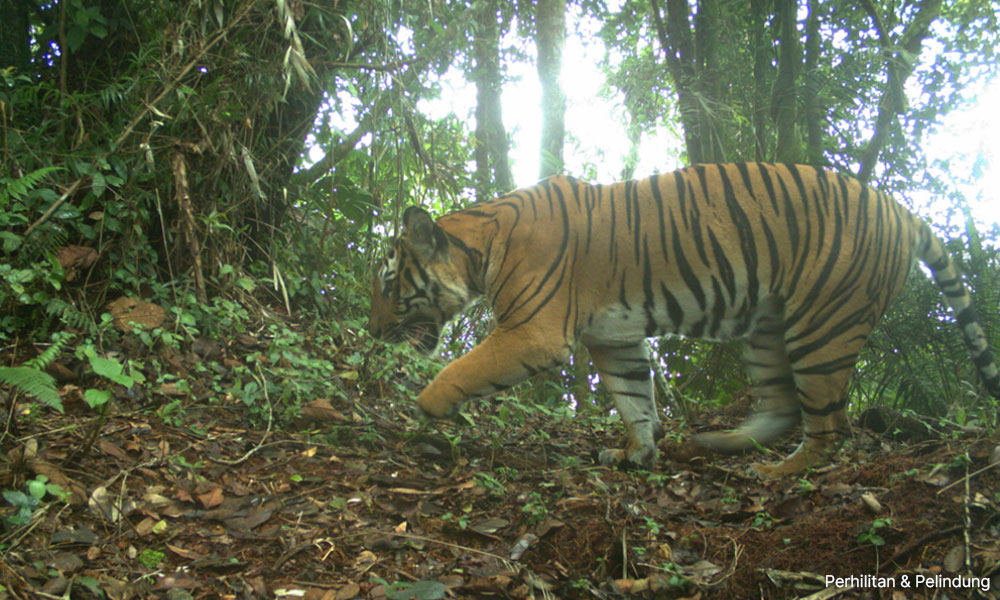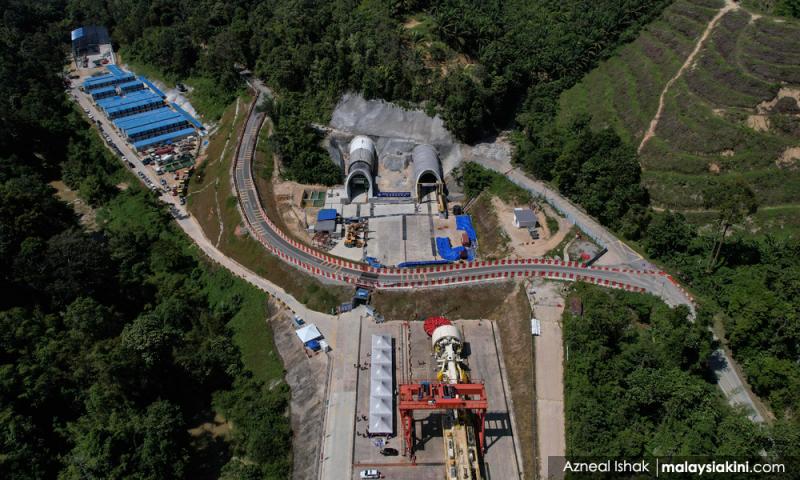LETTER | Study animal crossings at ECRL to reduce accidents
LETTER | Recently there were reports in the media on the construction of culverts for animal crossings on the 665km-long East Coast Rail Link (ECRL) that will link Port Klang with Kota Bharu.
It is important to ensure that the nation’s wildlife will be spared from further decimation, especially through accidents on roads and railways.
The ECRL passes through sensitive wildlife terrain in Pahang, Terengganu, and Kelantan and serious efforts must be undertaken to ensure wild animals can cross to either side of the tracks without risking their lives.
However, it remains to be seen whether the underpass culverts on the ECRL will be effective or not. If the presently-being constructed culverts or underpasses are not effective, then animals like elephants, tigers, and seladang (gaur) may resort to crossing the tracks and risk not only accidents but also electrocution.
In fact, even people prefer to dash across the roads instead of using underpasses or overhead pedestrian bridges, what more animals!
Overpass crossings are better, more inviting, and less forbidding to the animals, especially elephants, tigers, leopards, seladang and others. The animals will feel this is a continuation or a corridor to their habitat and will cross the animal bridge.

Underpasses are more onerous and costly to maintain and manage in the long term and they could be dark like tunnels and water could stagnate in them during the rainy spells.
The East Coast experiences seasonal heavy downpours and the culverts could be flooded or silted. Furthermore, some animals could be intimidated by the tunnel-like appearance and also fear being ambushed by tigers and leopards, and will avoid these under-track crossings.
Under-passes could turn out to be ambush points for tigers to prey on deer, wild boar, tapir, young elephants, and seladang calves.
The broader overpasses are relatively safer and better in all aspects. This is the reason why the recently-opened Delhi- Mumbai Expressway has animal bridges (overpasses) measuring 500m wide each, especially in the tiger-sensitive areas of Ranthambhore and Mukundra in Rajasthan.
From experience and experiments, it has been found that animals, large and small, prefer broad overpasses, and although they are costlier to build, there is no need for maintenance. India’s wildlife has had a marked increase in numbers due to positive measures like this by the government.
The latest Royal Bengal Tiger population in India stands at around 3,167. West Malaysia’s tiger population is low - only about 150 - and needs to be revived and stabilised at about 300 tigers.
Human-wildlife conflict
Having more elephants and carnivores like tigers and leopards will result in an unending human-wildlife conflict, and create a negative impact on the conservation and protection of wildlife.
It is already a major problem in India where wildlife causes much damage and destruction to agricultural and residential areas but the government’s compensation scheme has acted as a mitigating factor.

There has been an increase in the number of ‘tiger widows’ whose husbands have been killed by tigers. The ferocious Bengal tiger in the Sunderbans is known to swim across rivers at night and carry off men sleeping in their fishing boats.
The jumbos are equally destructive, raiding tea plantations and farms, stopping lorries, pulling out bundles of sugar cane, and sometimes killing people.
The impact of the ECRL on the surrounding wildlife sanctuaries must be studied in detail and changes made before it is too late.
There had been numerous cost reduction agreements with successive governments in the last few years, and it is possible that the wildlife-friendly overpasses had to be sacrificed to reduce the total cost of the ECRL.
I suggest that the issue of animal crossings - both underpasses and overpasses - be considered in depth, especially considering research done in India and China, where major road and rail infrastructural developments have taken place in the last 20 years.
The brand-new ECRL could benefit from their experience and save our depleting wildlife. The number of animals killed on the tracks should be counted monthly and preventive measures taken, although some kills will be unavoidable.
The Wildlife Department (Perhilitan) must be actively involved in the management of wildlife along the ECRL, and the lower the accident rate the better.
Keeping an eye out
Trains along the ECRL are expected to travel at speeds around 160kmph. Speeds need to be lowered in areas frequented by wildlife, especially at night.
With the latest night vision technology and other developments, the train operator should be able to spot any single animal or herd on the track a good distance away and slow the train to avoid killing them.
I hope the ECRL is being constructed as straight as possible which will enable wildlife to be spotted a safe distance away and avoid any accidents or kills.
The ECRL will be completed in 2026 and it has been predicted to be unprofitable for quite some time before a possible turnaround later.
However, it will certainly be a major tourist draw as locals and foreigners will be delighted to travel through a vast expanse of greenery and beautiful landscapes. The East Coast states could see an exponential increase in tourism activities on completion of the ECRL.
In this regard, the 665km ECRL will be one of the most scenic in the world passing through hundreds of kilometres in a pristine environment.
The authorities could make the ECRL even more attractive by planting flowering trees in the railway reserve at a safe distance from either side of the tracks.
During the flowering season, the scenery will be a sight to behold and have a ‘sakura’ effect. Fruiting trees should be totally avoided as they will attract birds, monkeys, squirrels, and others which will run the risk of electrocution when crossing the overhead electric cables.
The views expressed here are those of the author/contributor and do not necessarily represent the views of Malaysiakini.
RM12.50 / month
- Unlimited access to award-winning journalism
- Comment and share your opinions on all our articles
- Gift interesting stories to your friends
- Tax deductable
